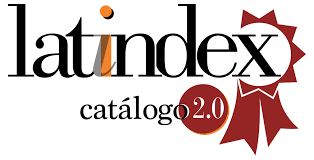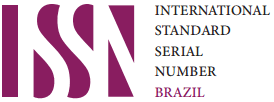Scales and quotient ADHD system properties: a correlation study
DOI:
https://doi.org/10.25118/2763-9037.2023.v13.1004Keywords:
ADHD, attention, continuous performance test, executive functions, impulsivity, Quotient ADHDAbstract
Assessment and quantification of Attention, Hyperactivity and Impulsivity symptoms and losses it promotes to an individual is a challenging task. A computerized assessment tool, Quotient ADHD® System, intends to provide objective measurements of hyperactivity, inattention an impulsivity on an individual basis. In a sample of 64 adults, we correlated results of this tool with scores of self-report scales for ADHD symptoms, impulsiveness and executive functions. Significant Spearman’s correlations (p≤.05) were found between Quotient ADHD® scores and ADHD symptoms, impulsivity and executive functions symptoms scores. Considering results obtained, we assume Quotient ADHD® might be a useful instrument to help evaluate inhibition control related to impulsiveness and inattention, being suitable to detect disorders with attention and impulsivity compromise.
Downloads
Metrics
References
Beauchaine TP, Zisner AR, Sauder CL. Trait impulsivity and the externalizing spectrum. Annu Rev Clin Psychol. 2017;13: 343-368. https://doi.org/10.1146/annurev-clinpsy-021815-093253
East-Richard C, R-Mercier A, Nadeau D, Cellard C. Transdiagnostic neurocognitive deficits in psychiatry: a review of meta-analyses. Canadian Psychology/Psychologie canadienne. 2020; 61(3):190-214. https://doi.org/10.1037/cap0000196
Vasconcelos A, Sergeant J, Corrêa H, Mattos P, Malloy-Diniz L. When self-report diverges from performance: the usage of BIS-11 along with neuropsychological tests. Psychiatry Res. 2014;218(1-2): 236-43. https://doi.org/10.1016/j.psychres.2014.03.002
PMid:24726025
BioBehavioral Diagnostics. Quotient ADHD system report interpretation guide: adolescents and adults age 15-55. Massachusetts: Pearson; 2010.
Product Overview. Quotient ADHD System. (n.d.). Retrieved February 2, 2018, from: http://www.quotient-adhd.com/product/product-overview/
Leite WB. Avaliação das propriedades psicométricas da escala de autorrelato de sintomas do transtorno do déficit de atenção e hiperatividade ASRS-18 [dissertação]. [Belo Horizonte]: Universidade Federal de Minas Gerais; 2011. http://hdl.handle.net/1843/BUOS-8NFFR5
Malloy-Diniz LF, Mattos P, Leite WB, Abreu N, Coutinho G, Paula JJ, Tavares H, Vasconcelos AG, Fuentes D. Tradução e adaptação cultural da Barratt Impulsiveness Scale (BIS-11) para aplicação em adultos brasileiros. J Bras Psiquiatr. 2010;59(2):99-105. https://doi.org/10.1590/S0047-20852010000200004
Godoy VP, Mata FGD, Conde BR, Souza CAO, Martins ALG, Mattos P, Miranda DM, Malloy-Diniz LF. Brazilian Portuguese transcultural adaptation of Barkley Deficits in Executive Functioning Scale (BDEFS). Arch Clin Psychiatry. 2015;42(6):147-152. https://doi.org/10.1590/0101-60830000000065
Kessler RC, Adler LA, Gruber MJ, Sarawate CA, Spencer T, Van Brunt DL. Validity of the World Health Organization Adult ADHD Self-Report Scale (ASRS) Screener in a representative sample of health plan members. Int J Meth Psychiatric Res. 2007;16(2):52-65. https://doi.org/10.1002/mpr.208
Vasconcelos AG, Teodoro MLM, Malloy-Diniz L, Correa H. Impulsivity components measured by the brazilian version of the Barratt impulsiveness scale (BIS-11). Psicol Reflex Crit. 2015;28(1):96-105. https://doi.org/10.1590/1678-7153.201528111
Cohen J. A power primer. Psychol Bull. 1992;112(1):155-9. https://doi.org/10.1037//0033-2909.112.1.155 - PMID:19565683
Epstein JN, Erkanli A, Conners CK, Klaric J, Costello JE, Angold A. Relations between continuous performance test performance measures and ADHD behaviors. J Abnorm Child Psychol. 2003;31(5):543-54. https://doi.org/10.1023/a:1025405216339 PMID:14561061
Mirabella G. Inhibitory control and impulsive responses in neurodevelopmental disorders. Dev Med Child Neurol. 2021;63(5):520-526. https://doi.org/10.1111/dmcn.14778
Barkley RA, Murphy KR. Impairment in occupational functioning and adult ADHD: the predictive utility of executive function (EF) ratings versus EF tests. Arch Clin Neuropsychol. 2010; 25(3):157-173. https://doi.org/10.1093/arclin/acq014
Ammon Scharf H. Assessing the validity of the Quotient ADHD System and its value in a comprehensive diagnostic assessment battery for adult ADHD. 2019. PCOM Psychology Dissertations, 519. https://digitalcommons.pcom.edu/psychology_dissertations/519

Downloads
Published
How to Cite
Issue
Section
License
Copyright (c) 2023 Maria Isabel Chaves Araújo, Bruna Bragança, Paulo Henrique Paiva de Moraes, Jonas Jardim de Paula, Matheus Sewastjanow da Silva, Débora Marques de Miranda, Leandro Fernandes Malloy-Diniz

This work is licensed under a Creative Commons Attribution-NonCommercial 4.0 International License.
Debates em Psiquiatria allows the author (s) to keep their copyrights unrestricted. Allows the author (s) to retain their publication rights without restriction. Authors should ensure that the article is an original work without fabrication, fraud or plagiarism; does not infringe any copyright or right of ownership of any third party. Authors should also ensure that each one complies with the authorship requirements as recommended by the ICMJE and understand that if the article or part of it is flawed or fraudulent, each author shares responsibility.
Attribution-NonCommercial 4.0 International (CC BY-NC 4.0) - Debates em Psiquiatria is governed by the licencse CC-By-NC
You are free to:
- Share — copy and redistribute the material in any medium or format
- Adapt — remix, transform, and build upon the material
The licensor cannot revoke these freedoms as long as you follow the license terms. Under the following terms:
- Attribution — You must give appropriate credit, provide a link to the license, and indicate if changes were made. You may do so in any reasonable manner, but not in any way that suggests the licensor endorses you or your use.
- NonCommercial — You may not use the material for commercial purposes.
No additional restrictions — You may not apply legal terms or technological measures that legally restrict others from doing anything the license permits.





























